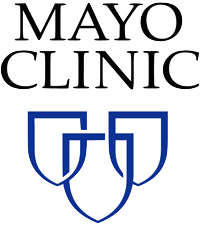John W. Kenagy, M.D., director of Kenagy & Associates in Longview, Wash., and a clinical professor of surgery at the University of Washington, writes in Hospitals & Health Networks about what he sees as attracting “greatness in 21st Century healthcare”. Among his observations:
“The great healthcare organizations of the 21st century will make new choices that attract innovation. So what attracts innovation? Decades of well-accepted research across the globe and in many realms has shown that innovation requires a different set of capabilities: sense/respond/adapt.
Every successful startup has to sense, respond and adapt to succeed. My work has focused on the small number of successful make/standardize/sell companies that were also able to sense, respond and adapt: Toyota, Intel and Apple, for example.
Sense/respond/adapt requires different capabilities than make/standardize/sell does. Here are the characteristics of sense/respond/adapt success, whether in a new startup or an innovative venture inside a large, established organization:
- A market or customer-centric value proposition focused on an unmet need. In healthcare, it’s easy: more access to better, safer care at continually lower cost. Leaders then translate the value proposition into a meaningful purpose to align the people attracting innovation.
- A replicable, scalable, low-risk, high-reward system with these tenets: People with autonomy build mastery, simple rules match accountability to control, and self-managing teams rapidly prototype new value opportunities close to real-time work.
- Sustainable, inspiring results that are low-risk, high-reward and fast.
”….Consider Mayo Clinic Health System. Mayo tested a sense/respond/adapt approach to diabetic population health at five different clinic sites. Within one year, the physicians in those clinics had improved their diabetic scorecard results by 122 percent compared with the cumulative results of the rest of the Mayo system.
“That was a significant pay-for-performance benefit for the system, while the physicians gained the value of all the flexible, responsive teams that sense/respond/adapt thinking developed to support them….”
“Make/standardize/sell fails at innovation because it views the workplace as a machine with identifiable problems and implementable solutions. Innovation is seen as a technical “fix.” But innovation isn’t a mechanistic improvement because, by definition, it doesn’t exist. It’s new and yet to be discovered. Make/standardize/sell organizations are great at improving what they know how to do, but the data show that they find it almost impossible to do what they don’t know how to do. It is clear that value-driven healthcare is not a system fix, consulting engagement, new technology or implementation; it is something you attract value to and create….”
“You have to attract its components and bring them together. Purpose; the ingenuity of people; simple rules focused on low-risk, high-reward discovery; and a safe place to work are the attractors. Once you start, it’s so attractive it’s difficult to get people to stop innovating to create new value.
“Attraction creates the innovation, and the innovation closes the loop. Now, the parent organization has something new to make, standardize and sell. That’s the great advantage that the attractive 6 percent acquire. In the future of high-value health care, the choice is not either make/standardize/sell or sense/respond/adapt, it’s and.”




